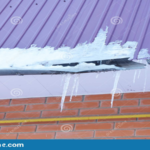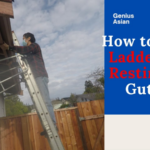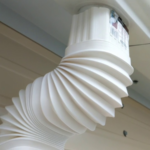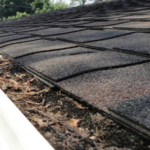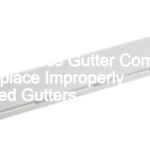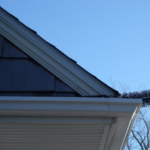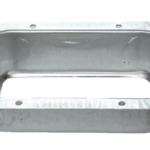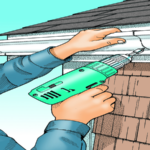- Water spilling over the sides of the gutters: This is a sure sign that the gutters are too small for the size of your home. When it rains, water should flow smoothly through the gutters and into the downspouts. If the gutters are overflowing, it means they’re not doing their job properly.
- Gutters sagging or pulling away from the house: This is usually a sign that the gutters were not installed correctly. If the gutters are not properly secured to the house, they will eventually sag or pull away, which can cause water damage to your home.
- Downspouts not draining properly: If water is not draining properly from the gutters, it can cause a number of problems. First, the water can pool around the foundation of your home, which can lead to flooding and water damage. Additionally, the water can freeze in the gutters, which can cause the gutters to crack or break.
How do you tell if gutters are installed correctly?
- The gutters should be level, without any sagging or drooping in the middle.
- The gutters should be securely attached to your home at the correct angle, so that water can flow freely into them.
- There should be no gaps or leaks in the gutters, and all of the joints should be sealed tightly.
- The downspouts should be installed in a way that allows water to flow away from your home, and not pool around the foundation.
What are some common mistakes that people make when installing gutters?
One of the most common mistakes people make when installing gutters is not taking the time to properly clean and prep the area where the gutters will be installed. This can lead to a number of problems, including gutters that are not properly secured and that may eventually come loose and fall off.
Another common mistake is not properly measuring the area where the gutters will be installed. This can lead to gutters that are either too small or too large for the space, which can create both aesthetic and functional problems.
Finally, many people fail to account for the fact that gutters need to be properly sloped in order to function properly. This is often overlooked during installation, which can lead to gutters that don’t drain properly and that may eventually start to leak.
What is the most common problem with gutters?
The most common problem with gutters is that they can become clogged with leaves and debris, which can cause water to back up and overflow. If the gutters are not regularly cleaned, this can lead to serious damage to the home’s foundation.
How do you know if your gutters are bad?
If your gutters are bad, you may notice water damage on the outside of your home. This can be in the form of peeling paint, wood rot, or mold. You may also notice that your gutters are sagging or pulling away from your home. If you notice any of these problems, it is time to replace your gutters.
Another way to tell if your gutters are bad is to look for leaks. Leaks can be caused by holes or cracks in your gutters. If you see water spilling out of your gutters, this is a sign that they need to be replaced.
If you have never cleaned your gutters, they are probably full of debris. This can include leaves, twigs, and dirt. When gutters are full of debris, they cannot effectively drain water away from your home. This can lead to water damage and other problems.
Finally, if you notice any of these problems, it is time to call a professional to inspect your gutters. A professional will be able to tell you if your gutters need to be replaced or repaired.
Should gutters be flush with fascia?
There is no right or wrong answer when it comes to the positioning of your gutters. Some people prefer to have their gutters flush with the fascia, while others like to have them slightly offset. Ultimately, it is up to you to decide what looks best for your home. If you are unsure, you can always consult with a professional to get their opinion.
Should gutters blend in or stand out?
There are a couple schools of thought when it comes to the design of gutters. Some believe that they should blend in with the rest of the house, almost as if they’re not even there. This can be achieved by matching the gutters to the trim color or even using clear gutters. Others believe that gutters should be a design element of the house and should stand out as a unique feature. This can be done by choosing a bold color that contrasts with the rest of the house or by using a material other than metal or plastic, such as wood or stone. Ultimately, it’s up to the homeowner to decide what look they’re going for.
What is the rule of thumb for gutter installation?
The rule of thumb for gutter installation is to install them so that they are level with the eaves of the house. This will ensure that water will flow away from the house and not pool around the foundation.
Should gutters go into the ground?
There are a few reasons for this. The first is that it can help to keep water from pooling around your foundation, which can lead to serious problems like cracking and flooding. The second is that it can help to prevent soil erosion around your home, which can cause your home’s foundation to become unstable. Finally, it can help to keep your gutters from clogging with debris, which can lead to water damage to your home.
Final Word
If you think your gutters may have been installed incorrectly, it’s important to be proactive and get them checked out as soon as possible. Incorrectly installed gutters can cause a whole host of problems, from water damage to your home’s foundation to creating an ideal breeding ground for mold and mildew. If you suspect something may be wrong, don’t wait to get it fixed – the sooner you do, the better.

